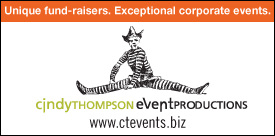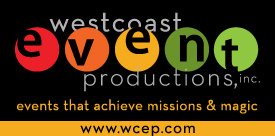Seattle, WA. The Bill & Melinda Gates Foundation Discovery Center remains closed to visitors, but the work continues.
From the foundation: “we hope to educate, inspire, and motivate people by sharing stories of work that is improving lives, from Seattle to South Africa. Through our interactive exhibits, visitors can investigate some of the world’s tough challenges and learn how to act on their own ideas and solutions.” Pictured above is Employee Occupational Health Nurse Katherine Volner, featured by the Discovery Center for serving as an essential worker. Volner is one of five featured stories in the new exhibit.
The Gates Foundation Discovery Center’s latest online exhibit, “Enduring COVID-19: Stories from Our Transforming World,” is now live!

The new exhibit features five inspiring stories from the fight to end the COVID-19 pandemic.
️Bringing together stories of strength, innovation, and hope from the community in Washington State during the COVID-19 pandemic, this online experience creates a forum for connection, empathy, and healing.
The exhibit highlights people under five main themes:
- Fighting and Treating COVID-19
- Spreading Joy and Healing
- Sharing Critical Information
- Meeting the Needs of Communities
- Essential Workers Meeting Everyday Needs
Lynda Stuart of the Gates Foundation COVID-19 Response Team shares her story within the interactive exhibit. Stuart discusses rising to the challenge of COVID-19: “Being a global citizen comes with a fascinating insight into the world. One person’s success is everybody’s success; one person’s failure can take us all down. It gives you a pair of eyes on problems that other people don’t necessarily see.”

Lynda Stuart says that watching her father work in health care, she realized “public health and global health were in [her] blood.”
Find out more about Stuart’s contributions here, including how she finds hope in community and spending time with loved ones.
In addition to highlighting those fighting and treating COVID-19 like Stuart, the new exhibition emphasizes the work of spreading joy and healing. Roxana Pardo Garcia describes herself as “a small business owner who is fortunate to be in a place to not only be creative but act on that creativity and to be of service to my community.”
Pardo Garcia recalls being “scared and overwhelmed” by the possibility of the pandemic’s long-lasting effects on the Latinx community. As a disproportionately impacted group, Pardo Garcia voiced concerns about the genetic, emotional memories that would be passed down.

Roxana Pardo Garcia found herself asking: “What is my role in facilitating healing for our communities?”
In response to this call to healing, Pardo Garcia quit her job and started Alimentando al Pueblo, “a different kind of food bank.” The intent was to provide food to people that meets their basic needs, while also ensuring food would be relevant to those receiving it. Pardo Garcia and her family felt that growing up, other food banks would offer items that didn’t get used.

All the vendors Alimentando al Pueblo works with are Latinx- and BIPOC-owned groceries and farms.
To read more about Pardo Garcia’s journey to provide food amidst the pandemic, click here. For more details about the stories mentioned, or to explore other highlights of the exhibit, explore the site.
From The Bill & Melinda Gates Foundation:
Our Role
Where does our foundation fit among the other institutions trying to improve the world?
We typically hear about two sectors, the public and the private. The private sector – business – is good at developing products and services, while the public sector – government – is good at delivering solutions to all the people who need them.
In many cases, the private and public sectors, acting either separately or together, meet people’s needs. But there are gaps, spaces where some people don’t get what they need to live healthy, productive lives.
Here’s an example: A generation ago, the market for vaccines worked well in wealthy countries – if you wanted to be immunized against a whole range of diseases, you could – but the system did not work for other parts of the world. Certain vaccines just weren’t available for most people. The private sector didn’t sell them in low-income countries because it wasn’t clear there would be buyers. Governments tried to step in, but they weren’t in a position to bring all the pieces — the funding, the partnerships, the logistics – together to make it work. Tragically, millions of children were dying of preventable diseases each year.
This is the kind of problem that philanthropies can help solve, and it’s how we define our foundation’s role.
For more info click here: Bill & Melinda Gates Foundation or Bill & Melinda Gates Foundation Discovery Center.









